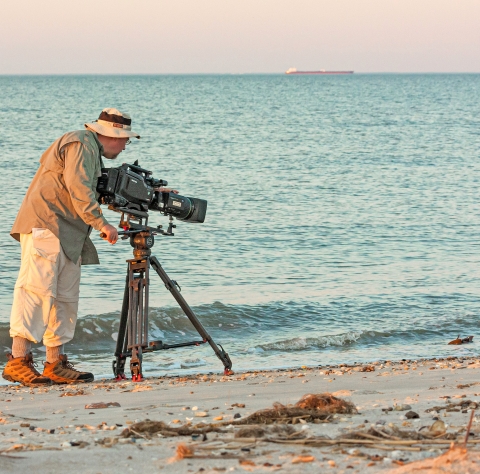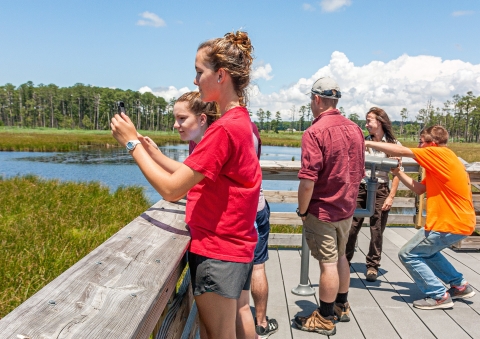Capture the beauty of the outdoors at hundreds of national wildlife refuges and national fish hatcheries across the country. Whether you use a smartphone, a zoom lens, or a video camera, these beautiful locations offer exceptional photo and filming opportunities. From scenic landscapes to captivating wildlife and plants, you'll discover an endless variety of subjects that are perfect for your next creative project.
New Law Includes Significant Changes for Visitors
Enacted in January 2025, the EXPLORE Act (Public Law 118-234) brings noteworthy changes to how the U.S Fish and Wildlife Service manages filming, still photography, and audio recording at national wildlife refuges and national fish hatcheries.
Permit-Free Opportunities
In most cases, you won't need a permit application or pay a fee for filming or photography at national wildlife refuges and national fish hatcheries if your group has eight or fewer people, and the activity and all participants meet the following conditions:
- Takes place in locations where the public is allowed,
- Uses only hand-carried equipment and does not use a set or staging equipment,
- Does not require exclusive access to a site,
- Does not disturb or negatively impact natural or cultural resources, environmental or scenic values, or other visitors,
- Is not conducted in a localized area that receives a very high level of visitation,
- Is not likely to result in additional administrative costs for the U.S. Fish and Wildlife Service,
- Your group complies with and adheres to visitor policies, practices, and regulations applicable to the specific refuge or hatchery visited, and
- Your group complies with other applicable Federal, State, and local laws, including but not limited to the Endangered Species Act, the Migratory Bird Treaty Act, the Archaeological Resources Protection Act, the Wilderness Act, and laws relating to unmanned aerial equipment.
No Permits Required for Authorized Activities: Permits and fees are not required for filming or photography that is merely incidental to, or documenting, otherwise authorized events and allowed activities.
When Permit Applications and Fees May Be Required
- Special Use Permits: If your group of eight or fewer people will not meet all of the conditions in the new law, or if the group has more than eight individuals, a General Activity Special Use Permit Application is usually required. Contact the specific refuge or hatchery location you intend to visit well in advance to inquire about permit requirements in these instances.
- The new law does not affect permits that may be required for a commercial visitor service, such as when visitors pay for transportation, tours, or guides (e.g., participating in a photography workshop or wildlife watching tour when fees are paid to a business or leader).
- Fees: If a special use permit application and special use permit are needed (as noted above) the U.S. Fish and Wildlife Service may charge location fees and fees to recover costs, such as to review the application and administer the permit and associated filming, photography, or audio recording activity.
Additional Considerations
Equal Treatment: The new law treats all filming, still photography, and audio recording the same, regardless of whether it’s for commercial or non-commercial purposes, content creation, or media-related activities.
Protection of Resources: Except as otherwise authorized, all individuals and groups involved in any activity on a national wildlife refuge national wildlife refuge
A national wildlife refuge is typically a contiguous area of land and water managed by the U.S. Fish and Wildlife Service for the conservation and, where appropriate, restoration of fish, wildlife and plant resources and their habitats for the benefit of present and future generations of Americans.
Learn more about national wildlife refuge or national fish hatchery must not cause resource damage, create an unreasonable disruption to other visitors, or pose a health or safety risk to the public.
For more information about filming, photography, or audio recording at a specific National Wildlife Refuge System or National Fish Hatchery System unit, please contact the location before you visit.








